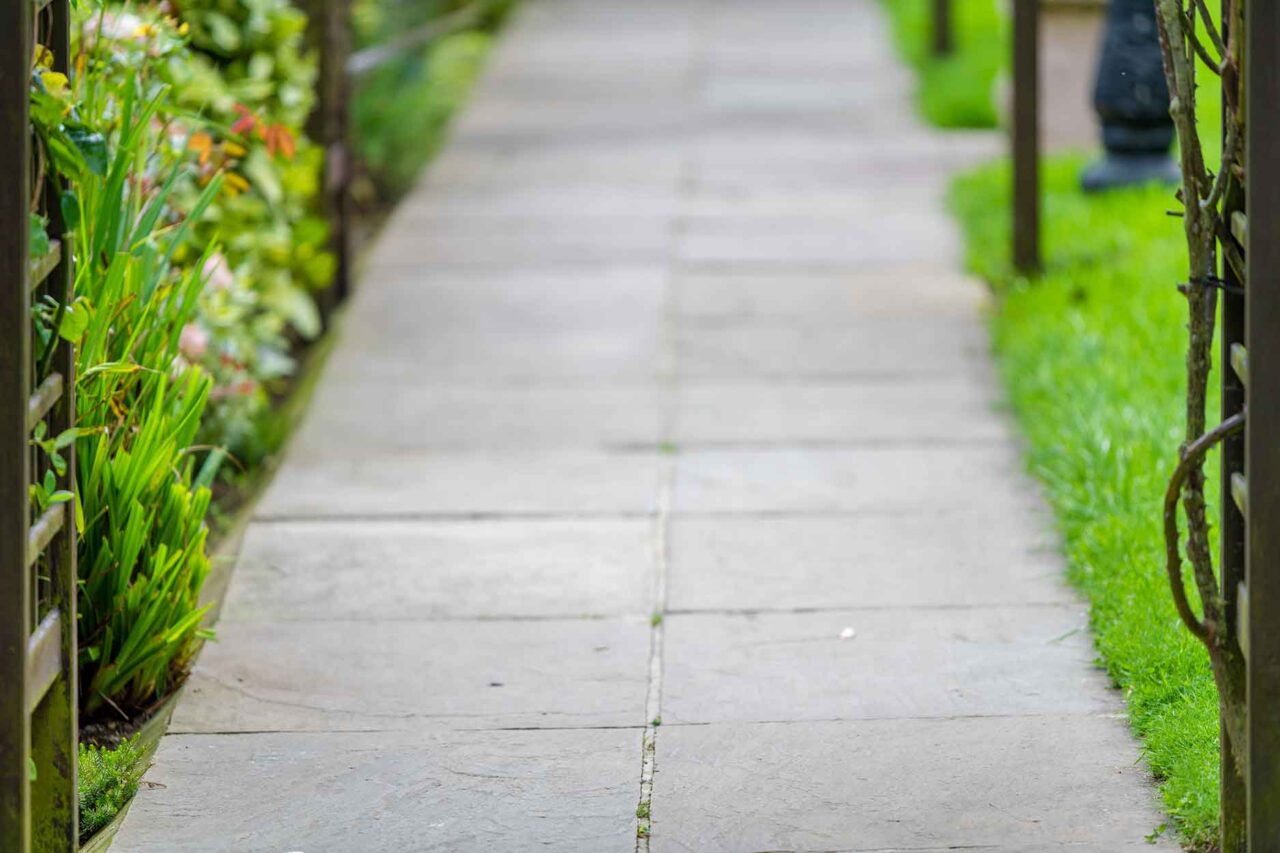Block paving is cherished for its versatility, durability, extensive color range, various styles, and timeless appeal, making it a preferred choice for driveways and patios. However, laying block paving correctly requires more than just placing the pavers; it’s a distinct process that demands careful preparation. In this guide, we’ll walk you through the steps for laying brick paving for your driveway or patio with precision.
Preparing Your Paving Foundation The groundwork is the foundation of any successful paving project. Focus on creating a solid foundation to avoid uneven, sunken, or misaligned paving stones.
Materials You’ll Need:
- Spirit level
- Wooden pegs
- Measuring tape
- Shovel
- Garden rake
- Plate compactor
How to Do It:
- Ensure your foundation is level, emphasizing firm, well-draining ground as crucial aspects.
- Mark out your paving area using wooden pegs; these pegs will serve as markers for the finished surface’s height.
- Leave approximately 300mm extra space on the free edge (away from the paved area) for edge Heging and ensure a 1:80 fall away from buildings and walls for proper drainage.
- Clear all vegetation and topsoil to a depth of about 200 mm-250 mm across the paving area.
- Enact the area with a garden rake using a plate compactor.
Building a Block Paving Border Unlike other Paving projects that start from a corner and work outwards, block paving begins by creating a border.
Materials You’ll Need:
- Block kerbs/concrete edging
- Concrete
- MoT/crusher run
- Plate compactor
- Sharp sand
- String lines
- Screeding rails
- Straight edge
How to Build a Block Paving Border:
- Begin by laying edge restraints (typically block kerbs or concrete edging) around your paving area. Pour 100mm of concrete on your foundation for one edge restraint at a time.
- Bed the edge restraint into the concrete and leave a 45-degree haunch along the sides to prevent brick movement.
- Repeat this process for all edge restraints to create a neat border.
- Install any necessary underground drainage, gratings, or recessed manhole covers.
- Backfill the central paving area with 150mm MoT/crusher run, compacted to 100mm.
- Apply a 50mm layer of slightly damp sharp sand on top of the compacted area and compact it.
- Add a second 20mm layer of sharp sand, levelling it with string lines, screeding rails, and a straight edge, maintaining the 1:80 fall. The foundation for laying brick paving stones is now prepared and ready.
Laying Block Paving With your foundation and border in place, it’s time to lay the block paving.
Materials You’ll Need:
- Block paving stones (permeable block pavers recommended)
- Measuring tape
- Mechanical block splitter
- Soft brush
- Plate compactor
- Kiln-dried sand
How to Lay Block Paving:
- Start by laying your bricks on the laying course at the lowest point of your paved area, ensuring they are 4-5mm above the desired finish level.
- Depending on your paving area’s size, chosen brick pavers, and pattern, you may need to cut extra bricks for infill pieces or at retaining edges with a mechanical brick splitter.
- Avoid cutting block pavers smaller than one-third of a full brick to ensure stability.
- Sweep the area and compact it with the plate compactor.
- Apply kiln-dried sand to the joints and brush it in with a soft brush during dry weather.
- Use the plate compactor again to push the sand into the joints.
- Check for any gaps in the jointing and fill as needed, compacting again.
By following these steps carefully, you can enjoy the rewards of a well-laid brick paving project that stands the test of time. brick paving is versatile and durable and a visually appealing choice for enhancing your outdoor spaces.
Transform your home effortlessly with FloorPup! Discover our extensive range of hardwood flooring, receive tips from expert floor care and maintenance professionals. Our team includes professional floor fitters, skilled driveway pavers, and dependable carpet repair specialists, ensuring top-notch results. Learn more about our dedication to quality on our About Us page. Visit FloorPup and start enhancing your living space today!
FAQS
What is the process of ground preparation for block paving?
To prepare the ground for block paving, you should follow these steps: Begin by removing any existing surface material and excavating the area to the required depth, typically around 6 to 8 inches. Next, create a solid and level base by compacting the soil and adding a layer of hardcore or Type 1 MOT aggregate, which should also be compacted thoroughly. Then, apply a layer of sharp sand to establish a smooth and stable surface for laying the brick pavers. Ensure proper slope and drainage, compact the sand, and you’ll be ready for the brick paving installation.
What do you put under block paving?
A well-prepared base is essential. Typically, it involves a compacted layer of coarse sand or fine gravel, providing a stable foundation for the paving blocks and assisting with drainage. To prevent weed growth between the blocks, a weed membrane is often used. Proper sub-base preparation is critical for the durability and stability of block paving installations.
Does block paving need cement?
Block paving typically requires a mixture of sand and cement known as mortar. This mortar is essential to hold the paving blocks in place, create stable joints, and ensure the durability and longevity of the block paving installation.
How deep to lay block paving?
Typically, a depth of 50 to 60 millimeters (2 to 2.4 inches) is recommended. This depth provides stability and durability while allowing space for a bedding layer of sand or aggregate beneath the blocks. However, the exact depth can vary based on factors like the type of blocks, the strength of the subsoil, and the specific requirements of your project.


